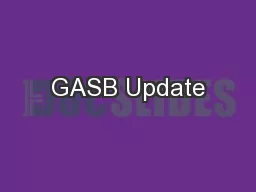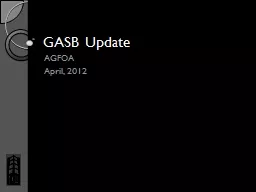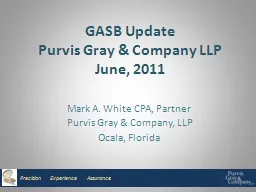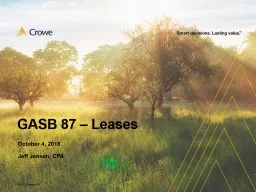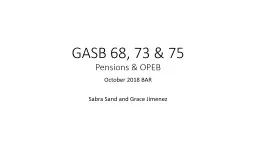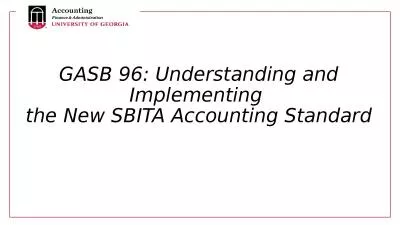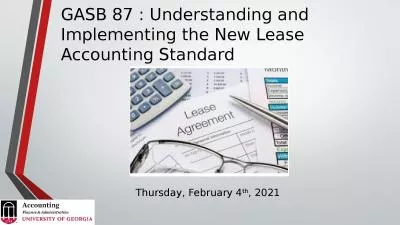PPT-GASB 68
Author : stefany-barnette | Published Date : 2017-07-08
Year 1 What you really want to know James Marta CPA CGMA ARPM Ken Hearnsberger Finance Manager NBSIA Matt Nethaway CPA 1 Government wide will recognize pension
Presentation Embed Code
Download Presentation
Download Presentation The PPT/PDF document "GASB 68" is the property of its rightful owner. Permission is granted to download and print the materials on this website for personal, non-commercial use only, and to display it on your personal computer provided you do not modify the materials and that you retain all copyright notices contained in the materials. By downloading content from our website, you accept the terms of this agreement.
GASB 68: Transcript
Download Rules Of Document
"GASB 68"The content belongs to its owner. You may download and print it for personal use, without modification, and keep all copyright notices. By downloading, you agree to these terms.
Related Documents


